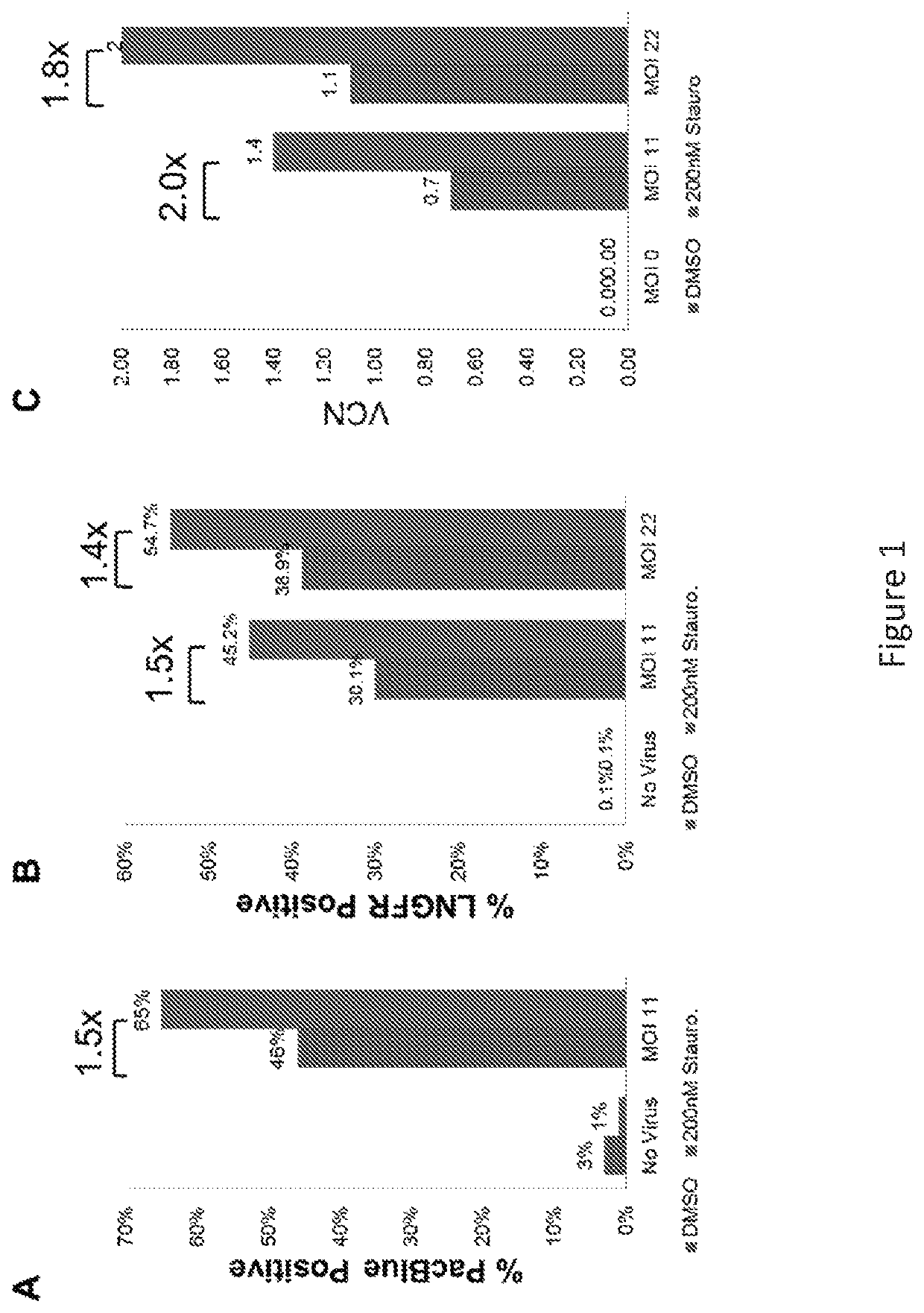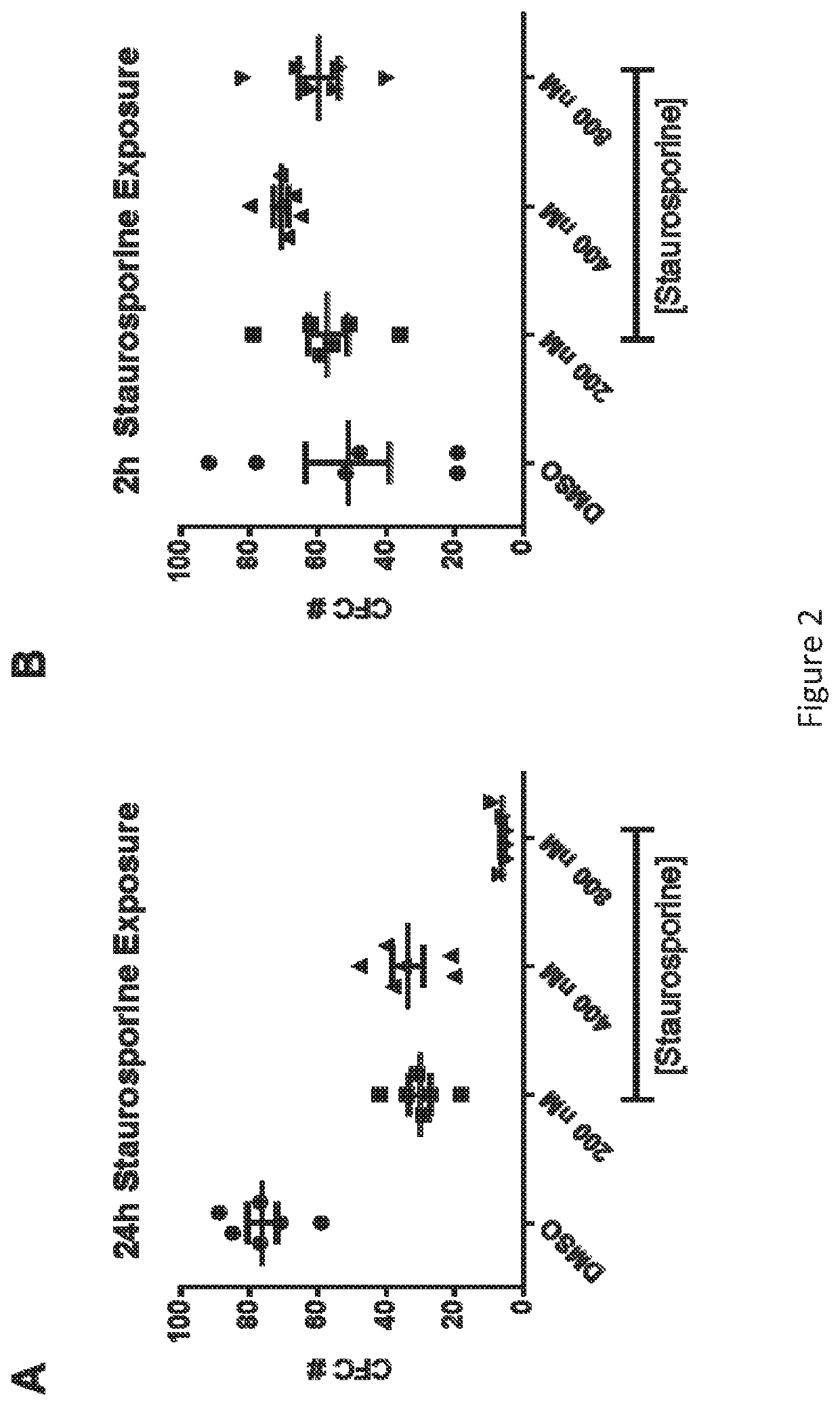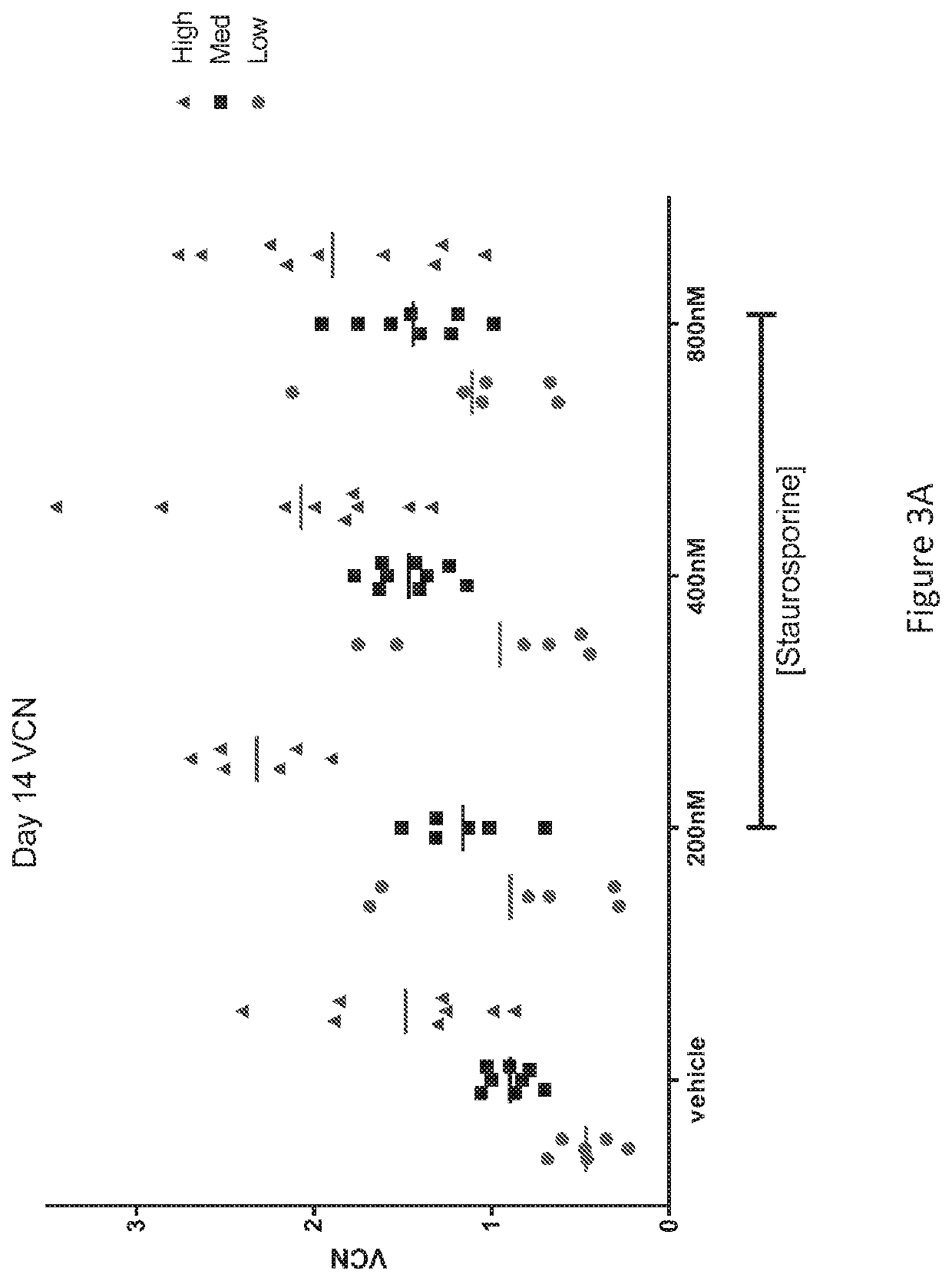VCN enhancer compositions and methods of using the same
a technology of enhancer and composition, applied in the field of gene therapy composition, can solve the problems of insufficient response to current therapies, fda placing a temporary stop on all patients, and major setbacks in gene therapy, so as to improve the therapeutic effect and improve the composition of gene therapy, the effect of increasing the transduction efficiency and vcn
- Summary
- Abstract
- Description
- Claims
- Application Information
AI Technical Summary
Benefits of technology
Problems solved by technology
Method used
Image
Examples
example 1
Validation Assays
Vector Copy Number (VCN) and Transduction Efficiency
[0536]Washed cells were resuspended in 2 mL Stem Cell Growth Medium (SCGM)+cytokines and transferred to a standard 12-well non-adherent tissue culture plate. Cells were maintained for an additional 6 days in a standard humidified tissue culture incubator (5% CO2) and then subjected to Vector Copy Number (VCN) analysis or single-cell nested PCR to determine transduction efficiency. Both VCN and the single-cell nested PCR assay were performed with qPCR using primers and probes specific to both the vector and an endogenous control gene. VCN was determined by dividing the amount of vector signal by the amount of the endogenous control gene. For the single-cell nested PCR assay, wells that contained a cell positive for the endogenous control gene and wells that contained a marked cell positive for both the vector and the endogenous control gene were enumerated, and the proportion of marked cells, or transduction efficie...
example 2
Staurosporine Increases Viral Entry and Subsequent VCN in Human Cd34+ Cells
[0540]hCD34+ cells were cultured for 48 hours in cytokine-containing media and then cultured for 2 hours at 37° C. in the presence of 200 nM staurosporine. Following the staurosporine incubation, cells were washed and transduced with a LNGFR BLAM-containing LVV for 2 or 24 hours. Cells transduced for 2 hours were then subjected to staining and flow analysis for the BLAM assay to quantify viral entry. Staurosporine treatment resulted in an approximate 50% increase in the amount of cells containing LVV compared to vehicle-treated controls. FIG. 1A. Additional analysis of cells transduced for the full 24 hour period demonstrate a 2-fold increase in VCN with staurosporine treatment and a subsequent 1.5-fold increase in transgene expression (LNGFR) as assessed by flow cytometry. FIGS. 1B and 1C.
example 3
Stem Cell Potential of HCD34+ Cells Transduced in the Presence of Staurosporine
[0541]hCD34+ cells were incubated for 2 or 24 hours at 37° C. in the presence of 200 nM, 400 nM, or 800 nM staurosporine or vehicle (DMSO). For the 2 hour incubation, cells were subsequently washed and cultured in transduction media for the remaining 24 hours. Following the cultures, cells were plated in methylcellulose for CFC formation. A short incubation time with staurosporine, 2 hours, at all three tested doses, did not affect the ability of the hCD34+ cells to form colonies. FIG. 2B. This indicates that the 2 hour staurosporine exposure did not affect the stem cell potential of the cultured cells. In contrast, a 24 hour exposure to staurosporine, at all three tested doses, affected colony formation. FIG. 2A. At the highest dose tested, 800 nM, there are few hCD34+ cells that retain colony-forming potential, and at the lower doses there is >50% decrease in CFC formation. These data indicate that prol...
PUM
| Property | Measurement | Unit |
|---|---|---|
| weight | aaaaa | aaaaa |
| concentration | aaaaa | aaaaa |
| concentration | aaaaa | aaaaa |
Abstract
Description
Claims
Application Information
 Login to View More
Login to View More - R&D
- Intellectual Property
- Life Sciences
- Materials
- Tech Scout
- Unparalleled Data Quality
- Higher Quality Content
- 60% Fewer Hallucinations
Browse by: Latest US Patents, China's latest patents, Technical Efficacy Thesaurus, Application Domain, Technology Topic, Popular Technical Reports.
© 2025 PatSnap. All rights reserved.Legal|Privacy policy|Modern Slavery Act Transparency Statement|Sitemap|About US| Contact US: help@patsnap.com



